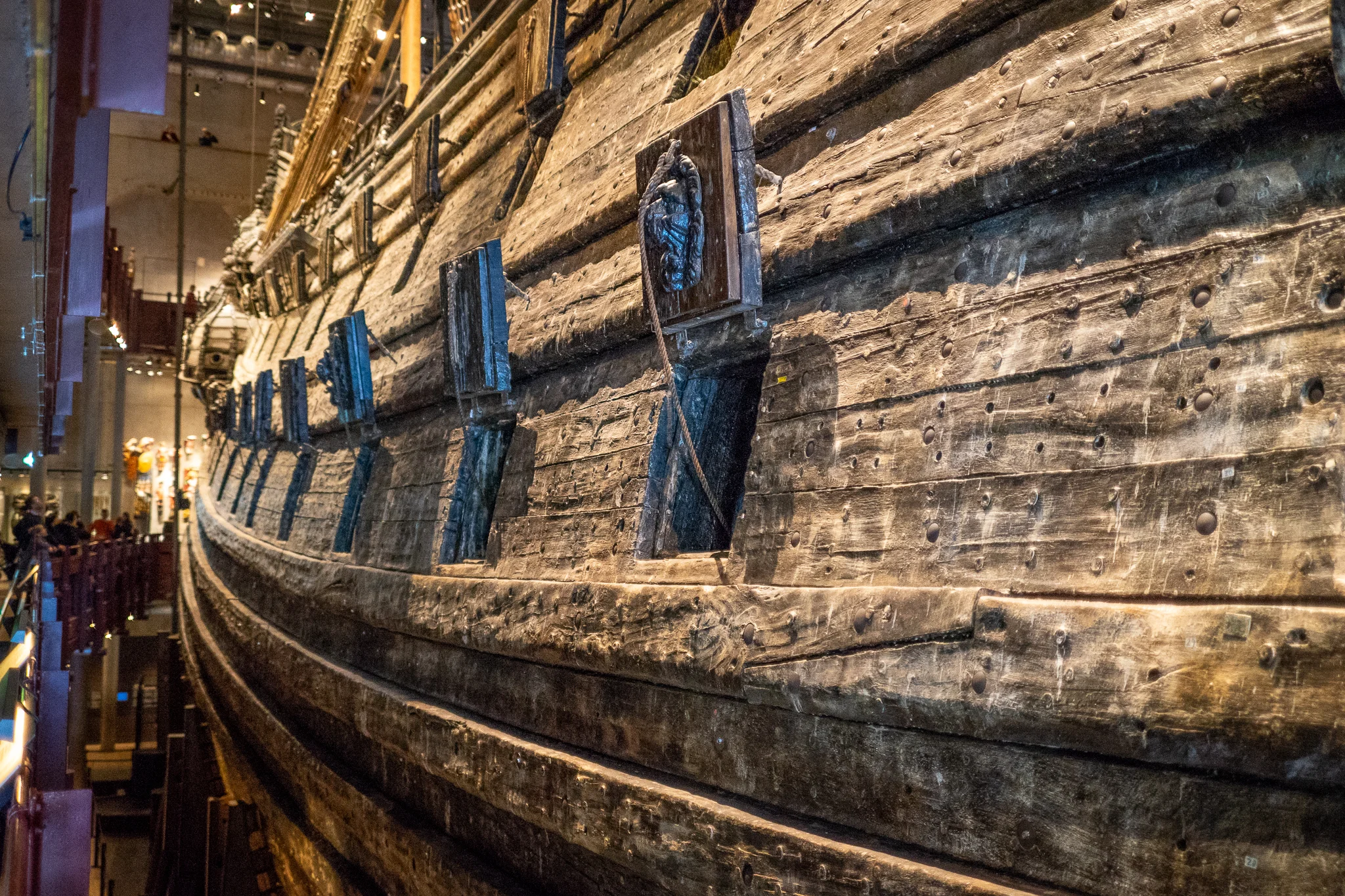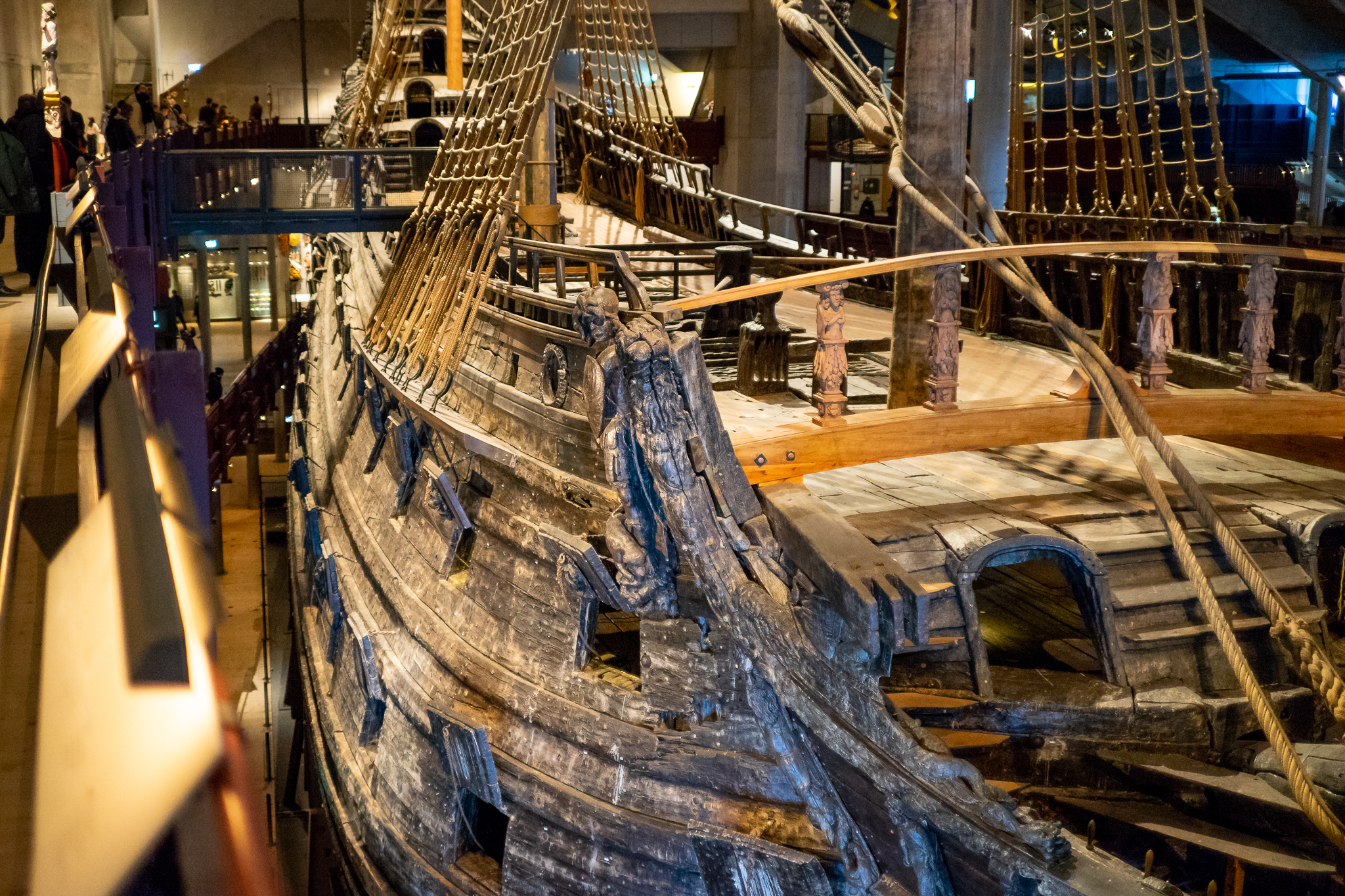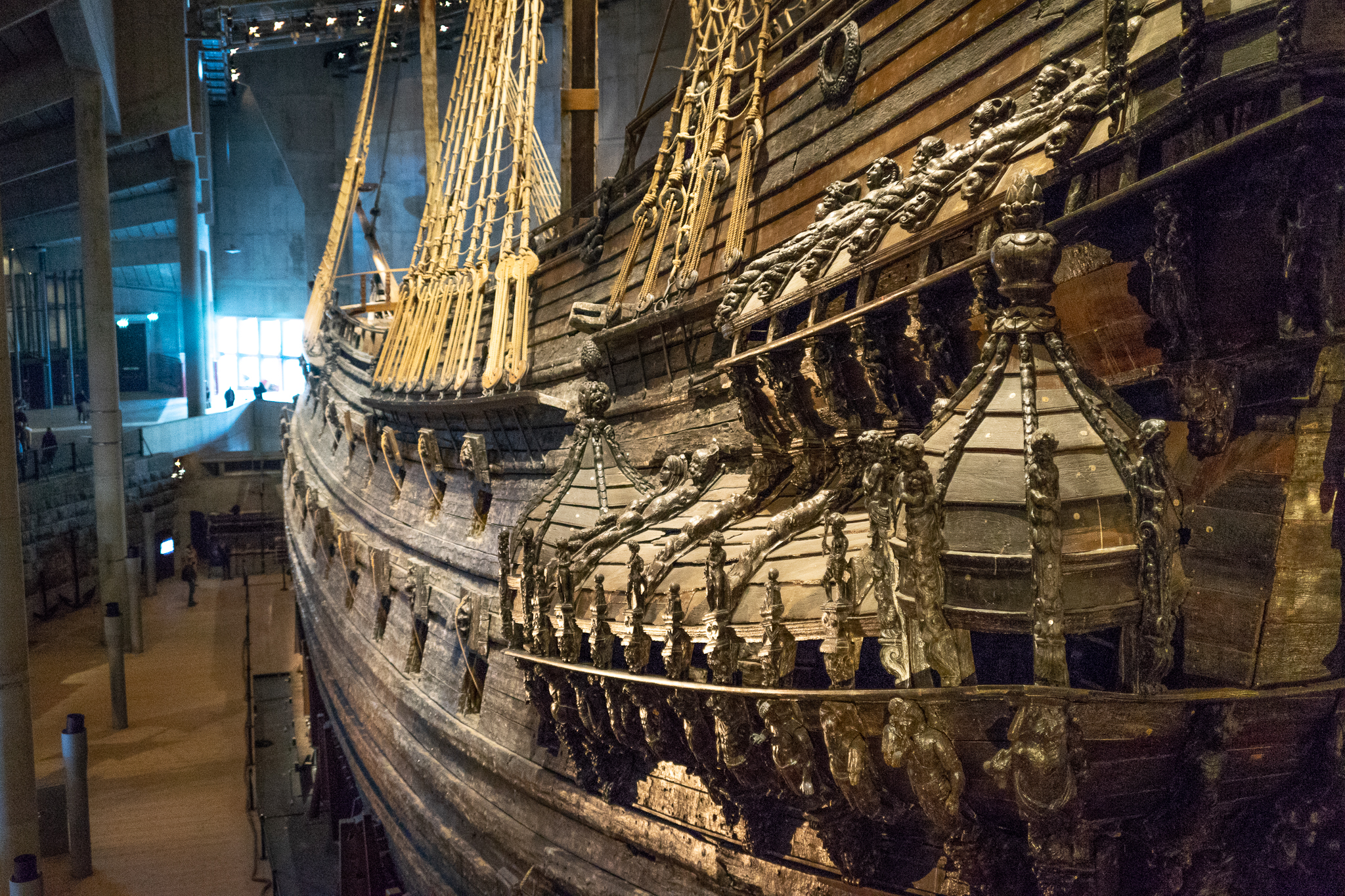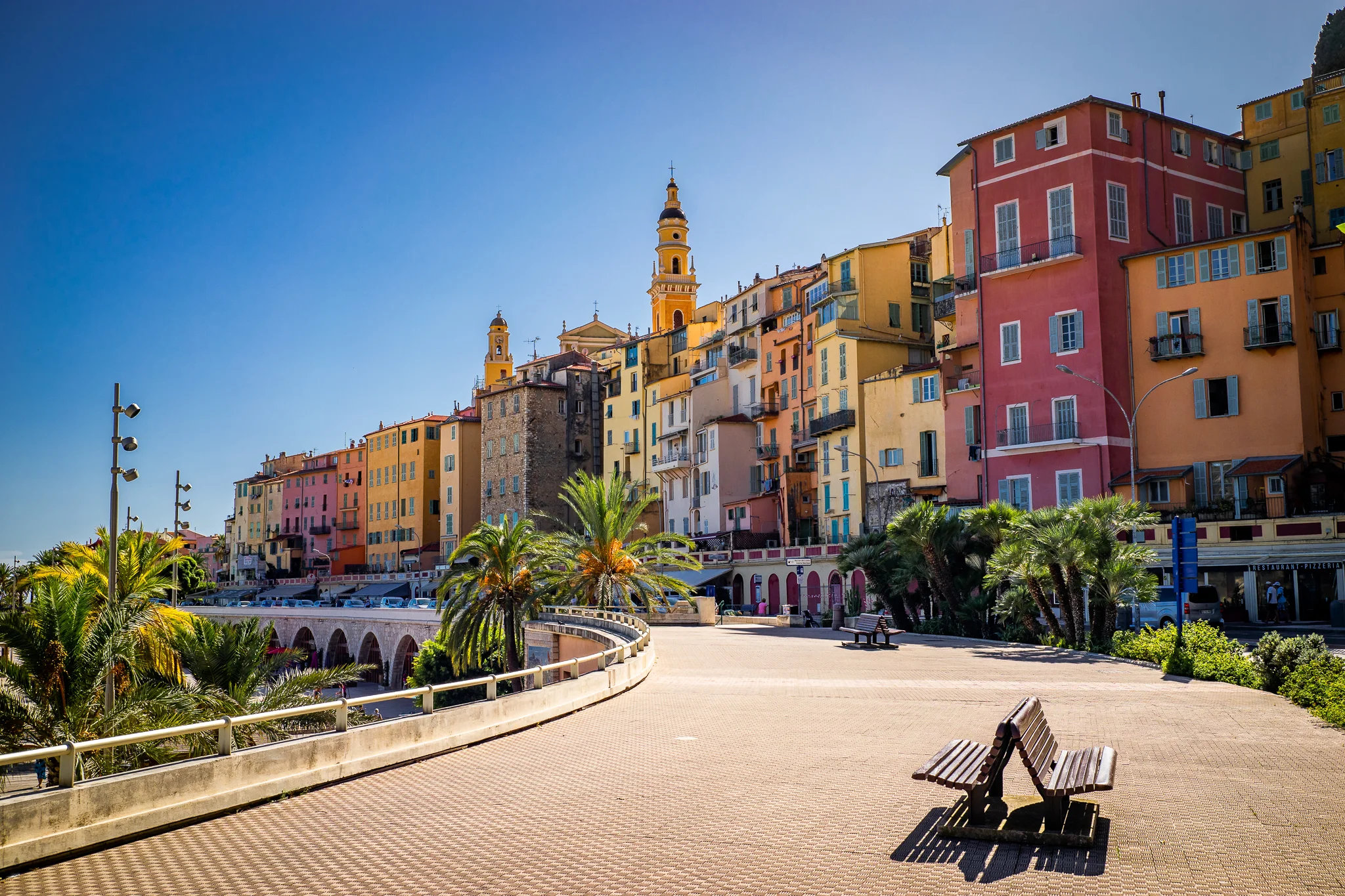The Vasa Museum. Is it worth it?
Considering that at the time of writing this the Vasa Museum has a google rating of 4.7 out of 5 from over 21,000 reviews, you could easily come to the conclusion that yes, it is worth the entry fee. And to be fair you’d be right in thinking that. So if all you were looking for is a simple yes or no answer as to whether or not to visit, in my opinion it’s a yes. You need not read any further. If however you are unfortunate enough to be anything like me, there are a few things about this place that you should maybe be aware of.
Up until March of this year, I had been working as a musician on the ships sailing across the Baltic Sea. I remember on my first contract seven years ago that some of the other entertainment crew were talking about visiting some museum with a big, old ship in it. I actually find this kind of thing really interesting and have no idea why I missed the trip. I was probably hungover, tired or still drunk from the night before. On their return I was jealous to hear that the place was apparently amazing and that anyone working on a ship gets a discount off of the entry fee.
Seven years later and I still hadn’t visited. Having found out I will probably not be working in Scandinavia for the foreseeable future, I decided to force myself to go. No one wanted to go with me so I was alone and quite tired, which for me means grumpy. So it’s pretty likely that this affected my experience.
I’m going to presume most people who have stumbled across this article have some idea of what awaits inside Scandinavia’s most popular museum. For those that don’t, here’s the basics. It’s a big, old ship. A 17th century, 64-gun warship to be more precise. It set sail on its maiden voyage in 1628 and after about 1300m, it toppled over and sank in Stockholm harbour. A total failure then. But what Vasa lacked in floatability, it more than made up for in its ability to sit at the bottom of the harbour doing not very much at all, as 325 years later, the ship was salvaged and remains incredibly intact today. I won’t go into any more details as that is what the museum is for and I’m not one for ruining things.
The ship is now housed in the Vasa Museum which can be found on the island of Djurgarden in Stockholm. It’s easy to find, as three large ship masts protrude from the roof. Also there are at least one thousand signs around the island pointing in its direction. It makes sense though as it’s one of the most popular attractions in the whole of Scandinavia and is currently the most popular museum in the region, with over 1,500,000 visitors per year.
Knowing this in advance, I was expecting a long queue on arrival. I was not disappointed. Fortunately though it moved along pretty quickly and instead, after spotting the ticket price, I started hoping that the ship crew discount was still in existence.
The entrance fee is 150SEK (€15ish) per adult whilst under 18’s get in for free, so not the cheapest. Once at the ticket booth, I asked if the discount was still a thing and noticed immediately how the guy behind the glass sank in his chair. I’m presuming it must be a monumental task to authorise it, as he then just waved me through for free. The last seven years of playing awful pop music certainly wasn’t for nothing then.
My favourite thing about the Vasa Museum is how the main exhibit is just there, right in front of you as soon as you walk through the sliding doors after paying (or not paying). The ship, although small by modern standards, is still more than large enough to impress on first sight even before you learn of its fascinating history.
The Vasa on its supports. Doesn’t look too bad for nearly 400 years old. Most of that spent under water.
The museum is basically one huge room. But there are several floors where artefacts found during the salvage are on display. From these floors you can view Vasa from above and below so a good walk around the whole ship will take up a fair chunk of your time in here.
The first thing I’d recommend to do is head to the small cinema room situated to the right, opposite the info desk. A short film, in various languages, details how the wreck was finally located and brought to the surface. Then you can take your time looking at the ship and artefacts with more of an appreciation of how this huge thing was salvaged in its current condition.
The ship is said to be 90% intact. The restoration work is clearly visible as paler, fresher looking wood.
Maybe I’m a bit weird but when I go to a museum I want to see everything. And I mean everything. I want to read every piece of information and see all of the smaller, less important exhibits. If there’s a guided tour available, I would usually give this a miss, as perhaps wrongly, I feel that these are for lazy people who can’t be bothered to find things out for themselves. This was however the first time I did take one, which brings me on to the first negative of my experience.
Because the room is so vast, I did find it quite noisy. I’m fairly sure I had stupidly decided to go during a public holiday as there were lots of families with plenty of children. There was an unpleasant din filling the place and I really couldn’t imagine taking my time to find all the information I wanted over all of the floors. I noticed on the info board that an English language tour was starting in two minutes at the bow of the ship and so I went to join it.
The tour and tour guide were great and I learned nearly everything that I wanted. There were the usual few people that asked stupid questions, probably for no reason other than to hear the sound of their own voice. The main problem yet again though was the background noise. I was stood close enough and the tour guide spoke loudly. Yet a lot of what was said whilst next to the ship was lost amongst the background noise of shouting children.
Before I carry on I should say that I have nothing against children. I don’t have any of my own but I am sure that for the most part, they are totally fine. Not being a parent means I shouldn’t perhaps comment on the parenting skills of others either but Scandinavia seems to have a weird thing going on that’s worth taking into account before you visit any tourist destination around these parts.
When working on the ships we would sometimes have what would appear to be feral children join us on stage, seemingly from nowhere. They would run around close to our expensive gear and when told to get down they either wouldn’t, or would return after about ten minutes. As it turns out they weren’t feral. It’s just that their parents didn’t care what they got up to. They would just watch what was going on and let it happen. I later learned that this is sort of a normal Scandinavian thing and is considered part of normal learning. I mean it must work to some degree as these countries always come out top in terms of academic achievement in Europe. But when you are trying to have a nice day out at a museum whilst perhaps slightly tired, it is beyond irritating.
As children, my parents took my brother and me to see HMS Victory and the Mary Rose. I remember being fascinated by them and listening intently to the tour guide through the provided walky-talky thing. The kids at the Vasa Museum would run around shouting and screaming, dragging their hands over the glass display cases. It really did spoil my experience.
In fact a lot of people didn’t seem as interested as me. Mostly I saw a lot of selfie taking and general conversation. A few people who were there alone like me seemed more into it, studying and photographing the incredibly ornate and well preserved wooden carvings. It’s sort of sad in a way that something as amazing and rare as Vasa can’t seem to fully hold the attention of today’s public once they get through the doors.
Intricate carvings are found all over the ship. Most still in amazing condition.
One thing to remember if you are wanting to take decent quality photos in there is that you are either going to need a fast lens, or a camera with decent high ISO performance. Some large windows by the bow let in some natural light but otherwise it’s pretty dark in there. And also a slightly off yellow colour.
The best details are found around the back.
So to summarise, it’s not the cheapest museum ever, it’s loud when busy and it’s pretty dark if you’re trying to get decent pics. Also, if I’m being really picky, I wasn’t blown away by the other objects on display either. There are lots of them but they just aren’t really that interesting and feel a bit like filler. The main event still makes this place worth a visit though. To be able to get so close to something so large and so old that is this well preserved is something I would have actually been happy to pay for. If I happen to be in Stockholm in a few years time, I might even go back.
If any of the above was helpful in anyway, feel free to repay me by visiting my Clickasnap page here! Look at as many of my photos as possible as I get a very, very small cut of the ad revenue per view that’s longer than 5 seconds. Thanks!










